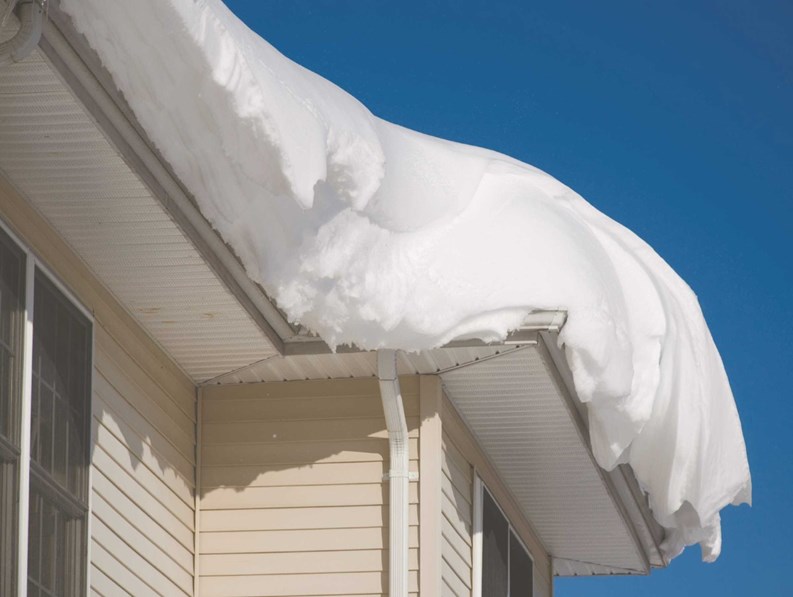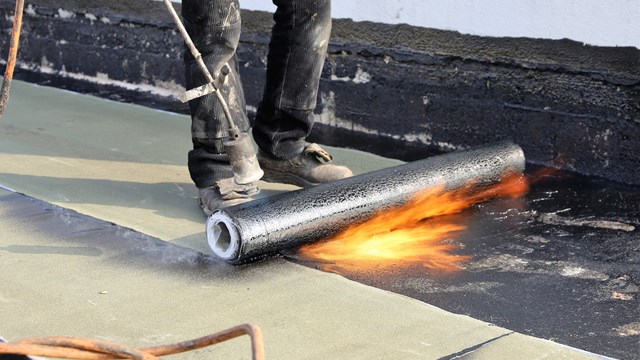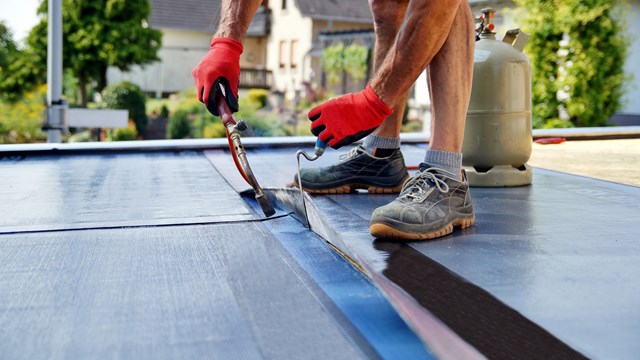The winter months bring us a more heightened awareness of what a major snowstorm can do to our commute to school or work and, our voicemails if we are a property manager. However, with the heavy snow comes a very real potential for structural failure of a condo association’s roof system that may have tragic results.
We have all seen on the news where a roof has experienced a complete or partial collapse after a heavy snowstorm. The cause, referred to as, “excessive snow load” can result in significant structural and property damage and may result in injury.
Typically, it is only a report of a water leak that brings attention to our roofs in the winter months. Many times the leak is the result of ice damming in the gutter or melting snow entering into a vent. However, sometimes the leaks may be from movement of the structure due to the weight of the snow and ice.
On steep sloped roof systems, excessive snow loads are usually the result of wind creating large snow drifts but they also may be from large accumulations of wet snow from one or several storms. Excessive snow loads most often occur in valleys or at a stepped location against a wall. Additional snow load as well as an impact load with force can also occur when snow or ice slides off a sloped roof onto a lower roof.
These scenarios can create concentrated loads on roofs that are well in excess of the loads imposed by uniformly distributed snow and that may exceed the design loads. Winter rain storms after a snow event and resulting ice accumulation can further increase roof loads and the associated risks. It is important to realize that that each roof has its own unique characteristics and design standards for snow loads. Remember, only an expert with experience calculating snow loads and design of roof structures should design a roof system or assist with a particular repair.
What are the Warning Signs?
Different types of roofing envelopes yield different signs and evidence of roof stresses due to excessive snow loads. Warning signs of structural roof problems include but are not limited to sudden roof leaks, cracks or movement in interior walls and ceilings, excessive sagging of structural roof elements or ceilings and even unusual sounds emanating from the attic space. Signs and evidence of a potential roof failure usually occur when the excessive snow load occurs. However, and significant cracking or walls or ceilings or other concerning changes in condition should be analyzed regardless of the season. Repeated or long term overloading of a compromised roof can significantly weaken the roof structure over time by fatigue.
Flat roofs have their own challenges during winter snow events. A parapet wall can cause wind driven snow to excessively accumulate adjacent to the wall. The roofs of a building which have been reinsulated for energy conservation should also be reevaluated to make sure the roof can handle additional loads of accumulated snow. Added insulation may increase the probability that more snow stays on the roof longer, thereby increasing snow loads especially when there are multiple storms and increasing the fatigue factor.
Replacing a non-ballasted roof with a ballasted roof also may reduce the snow load carrying capacity of that roof system. Not having the drainage benefits like that of a pitched roof, the flat roof is only as effective as its roofing substructure, roofing membranes and drainage design. The chronological events of cold temperatures at night freezing the snow melt around roof drains and scuppers create an excessive snow and ice load at these specific locations. Monitoring and maintenance of drains and scuppers should be exercised during winter months.
Differential loading can also be a great concern. This occurs when there is a large accumulation of snow load on one section of the roof and none on another. This can result in reaction or movement of the structural members that could turn problematic.
Prevention Begins with Design
Prevention of excessive snow load problems starts with proper design. Typical design standards/codes require allowance for a snow load of 30 pounds per square foot, which equates to approximately 12–48 inches of snow dependent on how dense or wet the snow actually is. More northern areas have higher requirements. It is best to be more conservative. A cubic foot of snow can weigh from 7 pounds for snow that is new and dry (fluffy) to 30 pounds for compacted icy snow or very wet snow. Therefore it is possible that a 12-inch wet snowfall is approaching the design limits.
If your building is older or compromised from construction deficiencies, it may be necessary to reinforce roof areas to handle large potential snow accumulation. Alternately, it may be necessary to remove the snow or maintain snow loads at acceptable limits of your individual roofing design. Snow removal should be done by knowledgeable, experienced contractors. Special care should be taken when removing snow from rooftops to prevent damage to the roof’s shingles or membrane. Snow should not be removed all the way down to the roof covering. Plastic shovels rather than metal should be used or care taken if using a mechanical remover. In the interest of worker safety, a lift or other means should be used if the integrity of the roof is a potential concern.
It is important to stay current with preventative maintenance throughout the year to maintain the association roofs’ integrity. It is equally important to monitor rooftop conditions throughout the winter during a storm to identify ice buildup, snow drifts and blocked drains especially if there is a concern about snow loads or a historical data suggesting a design flaw. If there is a concern, have the roofs inspected. If your buildings are exhibiting any signs of structural overloading as discussed above, an architect or structural engineer should be consulted. Your best insurance against structural damage and costly repairs from excessive snow and ice loads is to keep a watchful eye on your association’s roofs during the winter.
Allen Campbell is a project manager with The Falcon Group, Engineering, Architecture & Energy Consultants, based in Bridgewater, New Jersey.







Leave a Comment